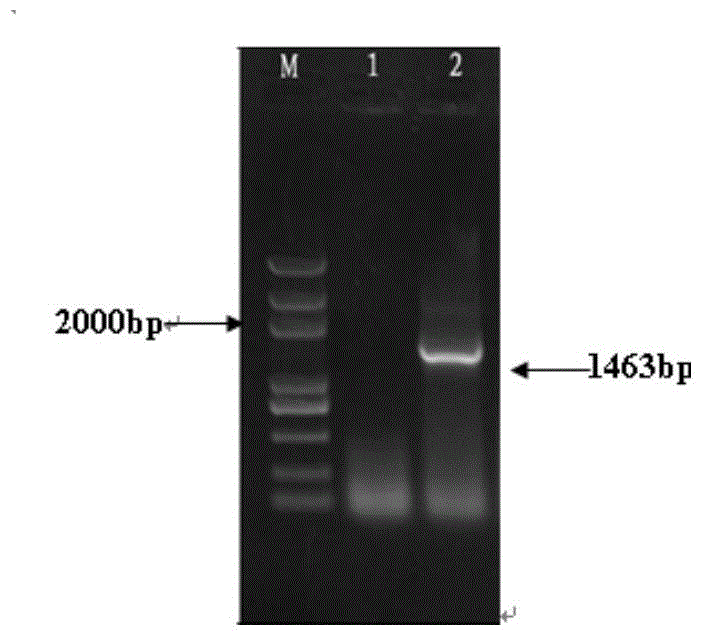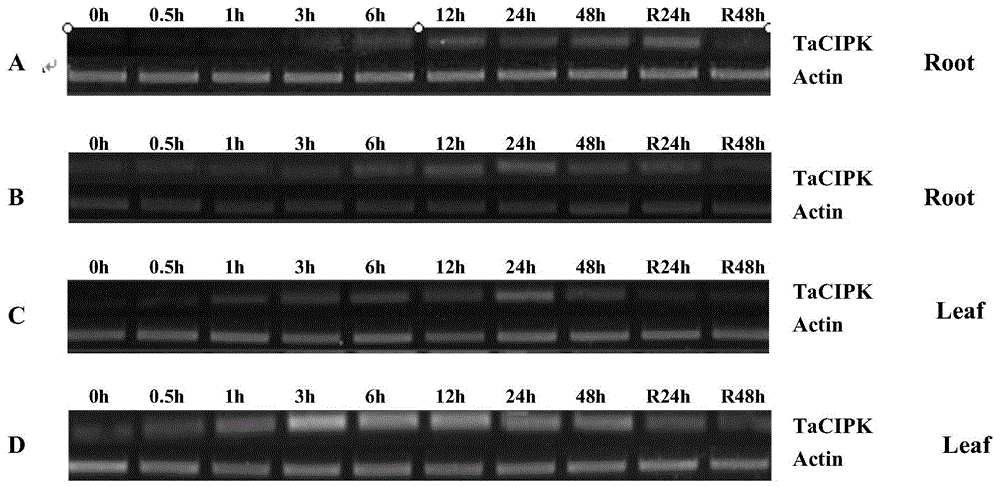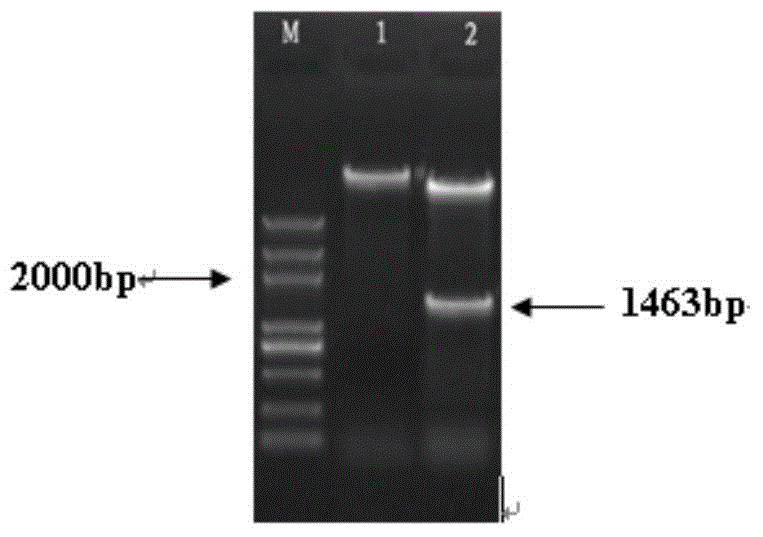A kind of wheat cbl-cipk stress resistance regulator, its coding gene and application
A technology that encodes genes and regulatory factors, applied in the fields of molecular biology technology and genetic engineering, can solve problems such as economic losses, infection by diseases and insect pests, etc.
- Summary
- Abstract
- Description
- Claims
- Application Information
AI Technical Summary
Problems solved by technology
Method used
Image
Examples
Embodiment Construction
[0008] A coding gene TaCIPK33 of a wheat CBL-CIPK stress-resistance regulator, the nucleotide sequence of which is shown in SEQ ID No.1. The coding gene TaCIPK33 of wheat CBL-CIPK stress regulators has a total length of 1463 bases and a coding region of 1332 bases.
[0009] The amino acid sequence of the wheat CBL-CIPK stress-resistant regulatory factor is shown in SEQ ID No.2. The wheat CBL-CIPK stress-resistant regulator consists of 443 amino acid residues.
[0010] A recombinant vector inserted into the nucleotide sequence shown in the above SEQ ID No.1.
[0011] A transgenic cell line containing the above-mentioned recombinant vector.
[0012] A transgenic plant contains the above-mentioned recombinant vector.
[0013] Application of the coding gene TaCIPK33, recombinant vector, transgenic cell line or transgenic plant of the above-mentioned wheat CBL-CIPK stress-resistant regulatory factor in cultivating salt-tolerant and drought-resistant plants.
[0014] Preferably ...
PUM
 Login to View More
Login to View More Abstract
Description
Claims
Application Information
 Login to View More
Login to View More - R&D
- Intellectual Property
- Life Sciences
- Materials
- Tech Scout
- Unparalleled Data Quality
- Higher Quality Content
- 60% Fewer Hallucinations
Browse by: Latest US Patents, China's latest patents, Technical Efficacy Thesaurus, Application Domain, Technology Topic, Popular Technical Reports.
© 2025 PatSnap. All rights reserved.Legal|Privacy policy|Modern Slavery Act Transparency Statement|Sitemap|About US| Contact US: help@patsnap.com



